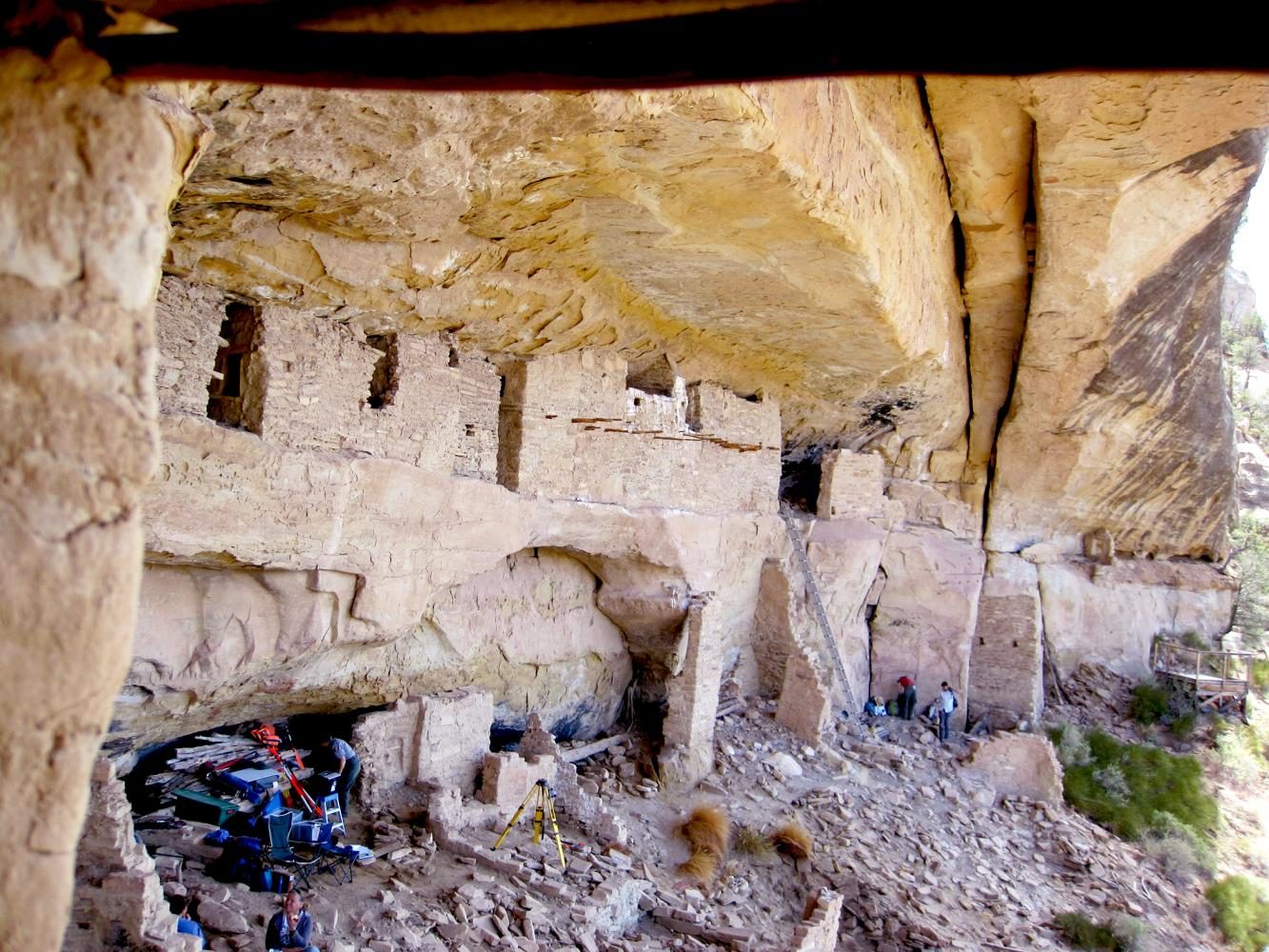Turkey DNA used to track human migration
Instead of testing humans, researchers analyzed turkey DNA
Park service personnel stabilize a Pueblo home from the 1200s in Mesa Verde National Park.
September 5, 2017
A team of researchers from WSU and the University of Oklahoma teamed up to investigate the disappearance of the Pueblo people from Colorado by using prehistoric turkey DNA.
According to an article the researchers published in the scientific journal PLOS ONE, the Pueblo people disappeared around 1280.
“This is an old problem in southwestern archaeology,” archaeologist and WSU professor Tim Kohler said. “You have probably tens of thousands of people, of Pueblo farmers, in Southwestern Colorado in the early to mid-1200s, and by the end they are all gone, and the classic question is … where did they go?”
To attempt to solve this question, Kohler, Brian Kemp, the lead author and anthropology professor at the University of Oklahoma, and the rest of the team used remains of the turkeys the Pueblo people domesticated due to a sharp decline in deer populations in the Mesa Verde region.
Specifically, they examined turkey mitochondrial DNA, which is only passed down by the paternal mother.
“In North America, we don’t ordinarily excavate human remains because of federal laws, and out of respect for [Native American] tribes,” Kohler said. “We think by analyzing the turkey DNA we’re getting as close as we can to the human DNA without actually doing the human DNA.”
Kohler and Kemp were able to acquire the turkey remains for DNA testing from thirty-seven pre-excavated archaeological sites located in the Mesa Verde region and the North Rio Grande in Northern New Mexico, according to the scientific article.
The turkeys sampled were from pre-1280 remains from the Mesa Verde and North Rio Grande regions, as well as from post-1280 remains from the North Rio Grande region, Kohler said.
Archaeologists have hypothesized the Pueblo people could have migrated to the North Rio Grande area and become, in large measure, the present-day Tewa people.
Factors behind this could be issues like overpopulation and constant war with other groups in the area for limited fertile farming area, WSU anthropology professor William Lipe said.
Lipe has studied Pueblo settlement patterns since the 1980s. He said more people began living on marginal farmland, using rainfall farming rather than irrigation.
“So this made them more vulnerable to drought,” he said, “a drought which might not affect a small population very much because they are on the best land, but would affect a larger population.”
After studying and comparing 180 DNA extracts taken from about 170 turkey remains in the Ancient DNA Laboratory at WSU, Kohler and his team made a discovery.
They found a positive correlation of genetic continuity between the pre-1280 turkey DNA excavated in Mesa Verde and the post-1280 DNA obtained from the North Rio Grande, Kohler said.
The finding of genetic continuity means that when the turkey remains from the two time periods were examined, the cells were found to have the same number and types of genes.
The pre-1280 turkey DNA from the North Rio Grande was found not to have a genetic continuity with either the pre-1280 Mesa Verde or the post-1280 North Rio Grande turkey remains, Kohler said.
“What we found is the turkey after 1280 in the Santa Fe area … was very, very similar in its DNA to the turkey from Southwestern Colorado,” Kohler said. “But the turkey before 1280 in the Northern Rio Grande was quite different.”
In general, the results support the team’s claim that the Pueblo people migrated from the Mesa Verde to the North Rio Grande and brought their domesticated turkeys with them, Kohler said. It is the first direct genetic evidence to support this conclusion, according to the journal article.
“If humans weren’t bringing these birds down with them to the Northern Rio Grande, how did those turkeys get there?” Kohler said. “Why does the turkey DNA change so suddenly around 1280? Just about the same time, we think, people were coming in to the North Rio Grande from Southwest Colorado.”






















